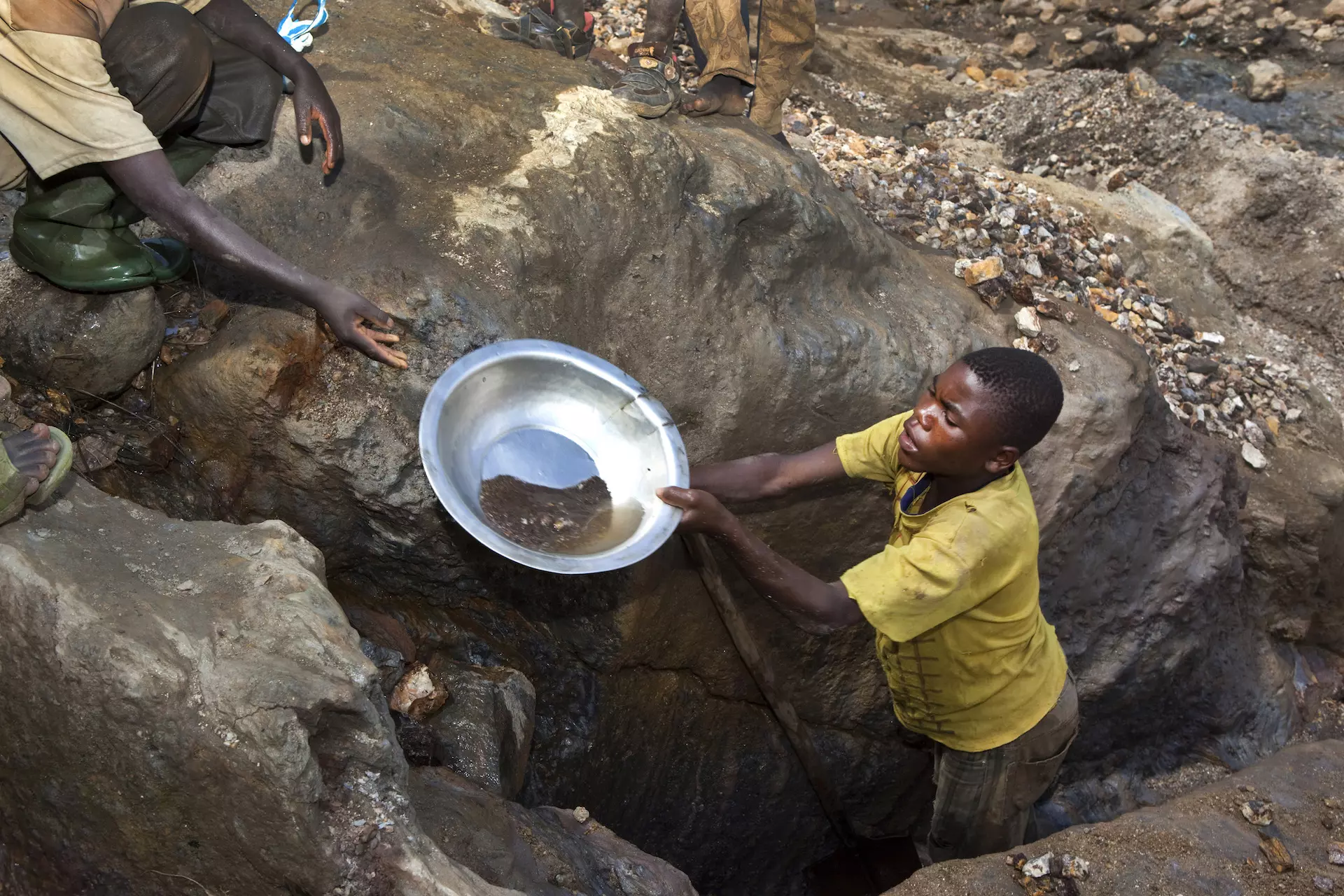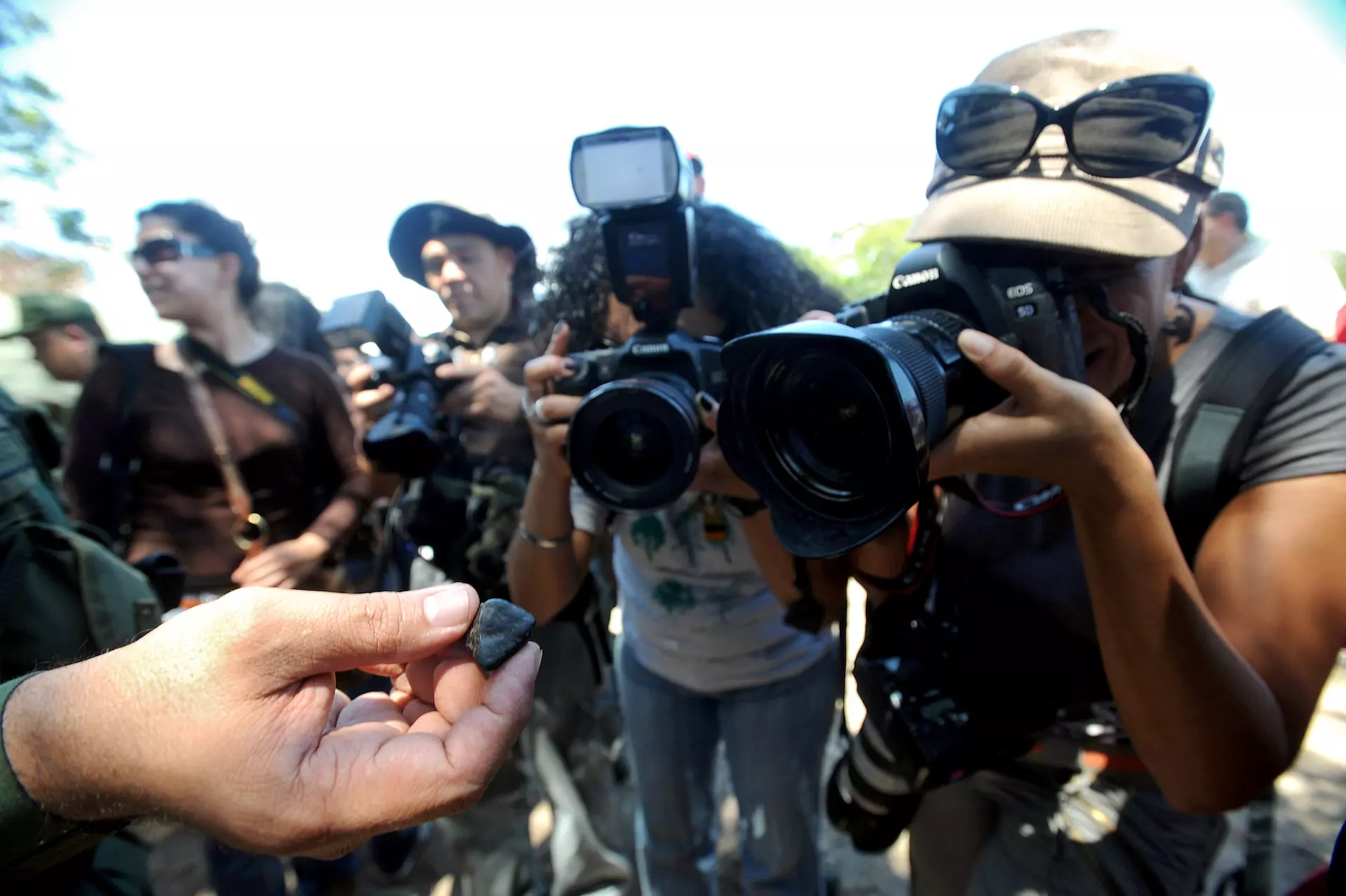https://www.lifegate.it/coltan
- |
It comes in the form of black sand or dark-colored rock fragments and represents a fundamental element for video cameras, cell phones and all latest generation technological devices.It serves to optimize the consumption of electricity in the chips and makes significant energy savings possible. It's coltan, a rare element in nature but increasingly decisive on the raw materials market.
Coltan is the contraction of columbite-tantalite, the two minerals that make up this material and which are rich in niobium and tantalum respectively.These are two extremely important metals for our society, so much so that the European Union has included them in the list of critical raw materials, i.e. those materials whose supply could be at risk.The rarity of tantalum compared to niobium meant that until the mid-nineteenth century these two transition metals were considered to be under the same chemical element, columbium.
Furthermore, coltan is not free from environmental problems, due to its difficult extraction, and politicians, since it is mined in poorly regulated areas of the world, fueling deadly conflicts between armed militias and the exploitation of child labor.
The current economic system, and with it the energy transition, must therefore address the dynamics linked to the extraction and marketing of coltan to make this product as sustainable as possible, both from an environmental and social point of view.

What is coltan used for?
Highly sought after for applications in the electronics and aeronautics industries, the metals present in coltan are used in various ways:niobium is used in the metallurgical industry for the preparation of metal alloys with high melting points, to increase corrosion resistance in some types of stainless steels and, finally, in the preparation of superconducting materials at low critical temperatures.
Tantalum is used in the form of metal powder in the electronics and semiconductor industries to produce high-capacity, small-sized capacitors, which are widely used in mobile phones and computers.
Where is coltan found?
The peculiarity of this mineral is that it is not found everywhere:for example, 80 percent of the world's reserves are found in a single state, the Democratic Republic of Congo (DRC).Other important reserves are found mainly in Western Australia, Canada, Brazil, China and smaller reserves have been explored in Burundi, Nigeria, Ethiopia, Mozambique and Venezuela.
Rwanda is currently the largest exporter of coltan and supplies 50 percent of the world's tantalum, despite having no reserves of this material.This is possible because the coltan extracted in the DRC is diverted to Rwanda and then exported.
Mines in the RDC are often improvised and extraction is concentrated mainly on the surface, as are the mineral selection and washing activities.It is not uncommon, then, that machinery is also used for underground extraction:these are often narrow and narrow tunnels, without ventilation and subject to frequent collapses, into which children manage to fit thanks to their small size.
How much does coltan cost?
The price of coltan is determined by the percentage of tantalite.But it is a very unstable market:in 1998 it cost 2 dollars per kilogram, in 2004 – when demand was extremely high – it reached 600 dollars.Today it is worth between 100 and 150 dollars per kilogram.The price also varies based on the possibility of extracting it.
We are talking about enormous figures when compared to what workers in the coltan mines earn.A day's work is paid one dollar, at most two, and the work is often performed by minors.It should also be considered that, as documented by several journalists, this "pay" must be deducted from the bribe that the miners are forced to pay to the soldiers who supervise the mine and who should guarantee compliance with the law.

What are the problems with coltan?
The fact that coltan is found at 80 percent in the DRC poses a series of problems.In fact, the high concentration of coltan in this area of the world has caused several conflicts to arise which are defined as low intensity, but are no less deadly for this:the hostilities that occur in the Kivu region act as an instrument of control for the various militias present in the area, who aim to exercise dominion over the mines from where the coltan is extracted.This allows them to smuggle the minerals to neighboring nations, such as Rwanda, which, although it has no coltan deposits, has become a major exporter.These minerals are subsequently sold to electronic component manufacturing industries.The uncontrolled exploitation of this Congolese resource led the UN to accuse, in a 2002 report, the companies involved in the exploitation of the DRC's natural resources, including coltan, of indirectly fueling civil conflicts in the area.
Furthermore, the extraction of coltan is not particularly simple and the militias that dominate the sites exploit child labour.A report by Doctors Without Borders explains that many of these "forced workers" lose their lives due to fatigue and multiple diseases related to this mineral.These include impairments in the heart, blood vessels, brain and skin;reduction in the production of blood cells and damage to the digestive system;increased risk of cancer;genetic defects in offspring;and diseases of the lymphatic system.As these are significant conditions, it is essential to provide medical care and medications, but these resources are out of reach for these individuals or are not available in the country.
Is there sustainable coltan?
There are products on the market that opt for sustainable choices.For example, in the field of telephony, there is Fairphone, a small company founded in the Netherlands in 2013 with the aim of creating a high-quality and modern telephone, without exploiting people or polluting the environment.Fairphone has chosen a traceable and "certified" coltan supply chain, which excludes mines controlled by warlords and where workers are guaranteed trade union and social rights.
Furthermore, collaborative projects have arisen between companies in the technology sector in recent years.Among these examples are Solutions for Hope, a collaborative project between several organizations, including Motorola, Intel, the non-profit Enough Project with the aim of developing a sustainable supply chain for tantalum from the Democratic Republic of Congo .
In reality, there are still few examples of this type.Therefore, one of the few feasible solutions is that, at an individual level, to reduce superfluous purchases and evaluate the purchase of refurbished technological products, therefore repaired and refurbished:as far as telephones and computers are concerned, there are now numerous online platforms that allow you to purchase refurbished, perfectly functioning and aesthetically impeccable products.
While waiting for the political level to increase the recycling of technological devices, primarily cell phones, the numbers of which are still limited.
